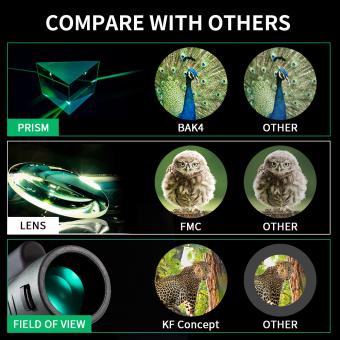What Causes Monocular Double Vision ?
Monocular double vision is a condition where a person sees two images of a single object with one eye. This condition is usually caused by problems in the eye itself, such as a cataract, astigmatism, or a problem with the cornea. Other causes of monocular double vision include dry eye syndrome, retinal detachment, and macular degeneration. In some cases, monocular double vision can be a symptom of a more serious underlying condition, such as a brain tumor or stroke. It is important to seek medical attention if you experience monocular double vision, as it can be a sign of a serious health problem. Treatment for monocular double vision depends on the underlying cause and may include corrective lenses, surgery, or medication.
1、 Refractive errors

Monocular double vision, also known as monocular diplopia, is a condition where a person sees two images of a single object with one eye. This condition can be caused by various factors, including refractive errors.
Refractive errors occur when the shape of the eye prevents light from focusing properly on the retina. This can cause blurred vision, and in some cases, double vision. Refractive errors that can cause monocular double vision include myopia (nearsightedness), hyperopia (farsightedness), and astigmatism.
In recent years, there has been a growing understanding that monocular double vision can also be caused by other factors, such as abnormalities in the eye muscles or the brain. For example, a condition called superior oblique myokymia can cause monocular double vision by causing the eye to twitch or vibrate.
In some cases, monocular double vision can be a symptom of a more serious underlying condition, such as a brain tumor or multiple sclerosis. Therefore, it is important to seek medical attention if you experience monocular double vision, especially if it is sudden or accompanied by other symptoms.
In conclusion, while refractive errors are a common cause of monocular double vision, it is important to consider other potential causes as well. If you experience this condition, it is important to consult with an eye doctor or other medical professional to determine the underlying cause and appropriate treatment.
2、 Cataracts

What causes monocular double vision? One of the possible causes is cataracts. Cataracts are a common eye condition that affects the lens of the eye, causing it to become cloudy and opaque. This can lead to a range of vision problems, including monocular double vision.
When a cataract develops, it can cause light to scatter as it passes through the lens, leading to double vision. This can occur in one eye only, which is why it is called monocular double vision. Other symptoms of cataracts include blurred vision, sensitivity to light, and difficulty seeing at night.
While cataracts are a common cause of monocular double vision, it is important to note that other conditions can also cause this symptom. These include problems with the cornea, retina, or optic nerve, as well as certain neurological conditions.
In recent years, there has been a growing interest in the role of inflammation in the development of cataracts. Some studies have suggested that chronic inflammation may contribute to the formation of cataracts, and that anti-inflammatory treatments may help to prevent or slow their progression.
Overall, if you are experiencing monocular double vision or other vision problems, it is important to see an eye doctor for a comprehensive eye exam. They can help to determine the underlying cause of your symptoms and recommend appropriate treatment options.
3、 Corneal abnormalities

Monocular double vision, also known as monocular diplopia, is a condition where a person sees two images of a single object with one eye. This condition can be caused by various factors, including corneal abnormalities.
Corneal abnormalities refer to any irregularities or damage to the cornea, which is the clear, dome-shaped surface that covers the front of the eye. These abnormalities can cause light to bend or refract unevenly as it enters the eye, resulting in distorted or double vision.
Some common corneal abnormalities that can cause monocular double vision include corneal scarring, keratoconus, and corneal dystrophies. Corneal scarring can occur due to injury or infection, while keratoconus is a progressive condition where the cornea becomes thin and bulges outward. Corneal dystrophies are genetic disorders that cause abnormal deposits to form in the cornea.
Recent studies have also suggested that dry eye syndrome, a condition where the eyes do not produce enough tears, can cause monocular double vision. This is because the lack of tears can cause the cornea to become dry and irregular, leading to distorted vision.
Treatment for monocular double vision caused by corneal abnormalities may include corrective lenses, such as glasses or contact lenses, or surgery to reshape the cornea. In some cases, treatment for the underlying condition causing the corneal abnormality may also be necessary.
In conclusion, corneal abnormalities can cause monocular double vision by distorting the way light enters the eye. It is important to seek medical attention if you experience any vision changes or abnormalities to determine the underlying cause and receive appropriate treatment.
4、 Dry eye syndrome

Monocular double vision is a condition where a person sees two images of a single object with one eye. It can be caused by various factors, including dry eye syndrome. Dry eye syndrome is a condition where the eyes do not produce enough tears or the tears evaporate too quickly, leading to dryness and irritation of the eyes.
When the eyes are dry, the cornea and other parts of the eye can become distorted, leading to double vision. This is because the light entering the eye is not being refracted correctly, causing the brain to receive two different images of the same object.
Recent studies have shown that dry eye syndrome can also affect the muscles that control eye movement, leading to monocular double vision. The muscles that control eye movement can become weak or stiff due to the lack of lubrication in the eyes, causing the eyes to not align properly.
Other factors that can cause monocular double vision include cataracts, astigmatism, and corneal irregularities. It is important to consult an eye doctor if you experience any vision problems, as they can help diagnose and treat the underlying cause of the condition.
Treatment for dry eye syndrome and monocular double vision may include the use of artificial tears, prescription eye drops, and lifestyle changes such as avoiding dry environments and taking breaks from computer screens. In severe cases, surgery may be necessary to correct the underlying issue.








































